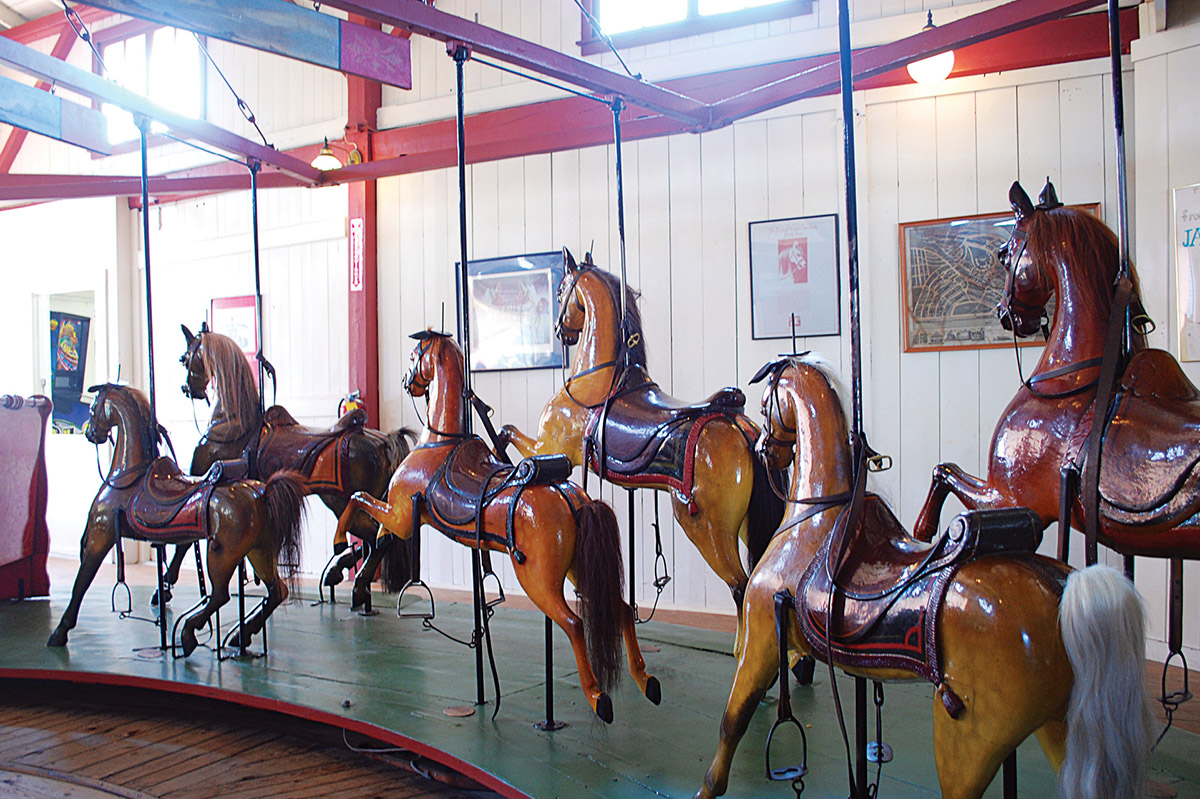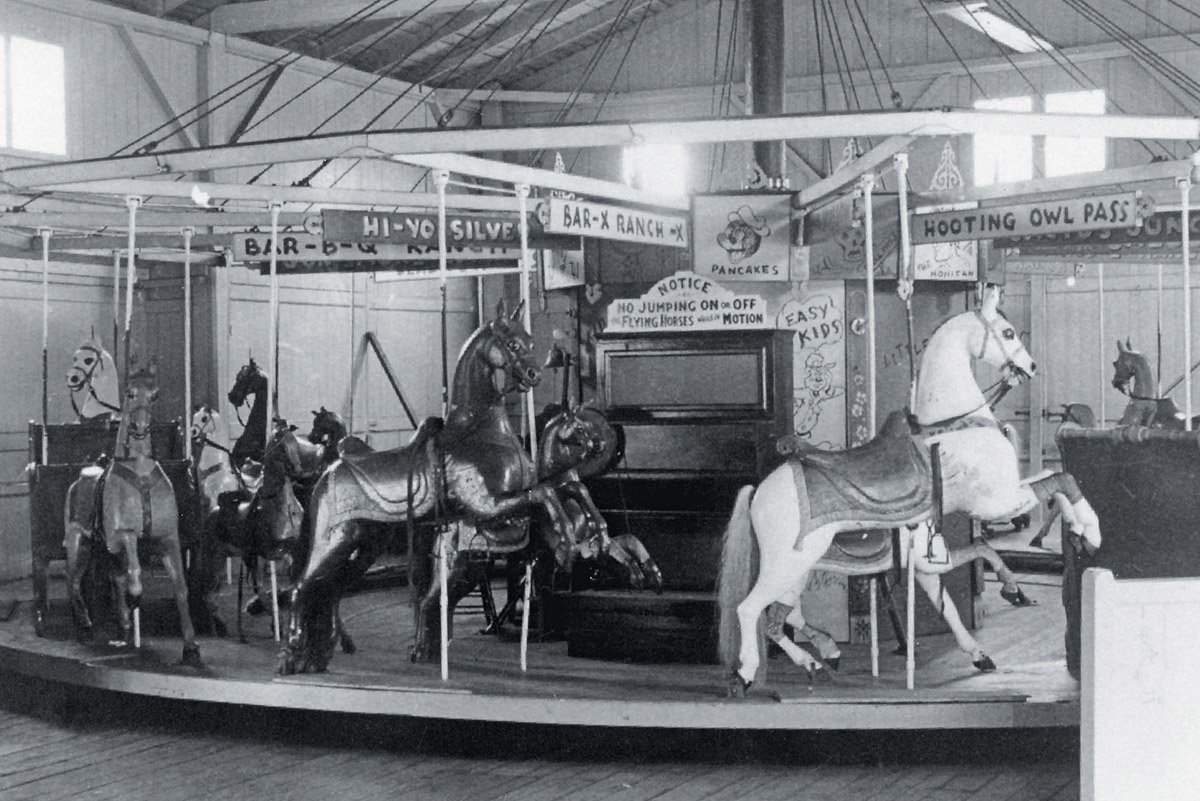Boston Landmark: Flying Horses Carousel on Martha’s Vineyard

A band performs for a crowd in preparation for a Fourth of July celebration in 1912. / Photograph courtesy of Martha’s Vineyard Preservation Trust Archives
In this tech-crazy age, when children would rather play with iPhones than play tag outside, people of all ages still line up for five-minute rides—and the chance to snag a coveted brass ring—aboard the Flying Horses carousel in Oak Bluffs.
Brought to the Vineyard after an eight-year stint on Coney Island, the Flying Horses is the country’s oldest operating platform carousel. It was built in 1876 by Charles Dare, a talented New York toy maker renowned for his contributions to early carousel manufacturing. Housed in a red-shingled barn, the Flying Horses—dubbed a National Historic Landmark in 1986—features 20 stationary wooden horses and four double-seated chariots, all carved by hand and fastened to the carousel’s 36-foot-wide platform. Etched glass-marble eyes and authentic horsehair manes and tails originally accented the horses; the chariots, meanwhile, were modeled after birds, dragons, and snakes. Dare’s craftsmanship was complemented by a series of 19th-century folk art paintings on the carousel’s center panels. These artworks were hidden for years by layers of paint; restoration efforts in the 1970s revealed images including a Hudson River steamboat and a racehorse—remnants of the carousel’s New York roots.
Aside from its impressive artistry, the carousel’s most popular feature (at least in the eyes of its riders) is its ring arm. Composed of metal sidewalls and a sprung-steel lip, the arm—manned by a steadfast attendant—supplies a steady stream of rings, which riders try to grab as they pass by. Those lucky enough to snatch a rare brass ring earn a free ride—and plenty of bragging rights. “It’s the high point of an island summer,” says Christopher Scott, president of the Martha’s Vineyard Preservation Trust, which acquired the carousel in the 1980s. “We frequently get photos showing a child’s first ride, with their parents and grandparents there to witness the event.”

A modern photo of the carousel’s interior. / Photograph by Roland Hopkins
Since landing in Oak Bluffs in 1889, the Flying Horses has been managed by a slew of proprietors, some of whom have revamped aspects of its functionality and appearance. William Davis, who allegedly acquired the carousel as payment for a debt, updated its power system from steam to electric in 1900. Nearly a century later, the Martha’s Vineyard Preservation Trust hired North Carolina artist Rosa Ragan to repaint and enhance the whimsical horses and chariots. The trust also replaced an old tape deck—itself a makeshift substitute for the original calliope—with a 700-pound automatic organ, which plays 12 songs on repeat.
The Flying Horses has seen its share of changes since its 19th-century debut, but its appeal to patrons both young and old remains the same. After all this time, Scott says the carousel—traditionally in operation from Easter through Labor Day—still provides upward of 300,000 rides a year. “For visitors and summer residents, a visit to the carousel is an irreplaceable part of the Vineyard experience,” he says.

A vintage photo of the carousel’s interior. / Photograph courtesy of Martha’s Vineyard Preservation Trust Archives


